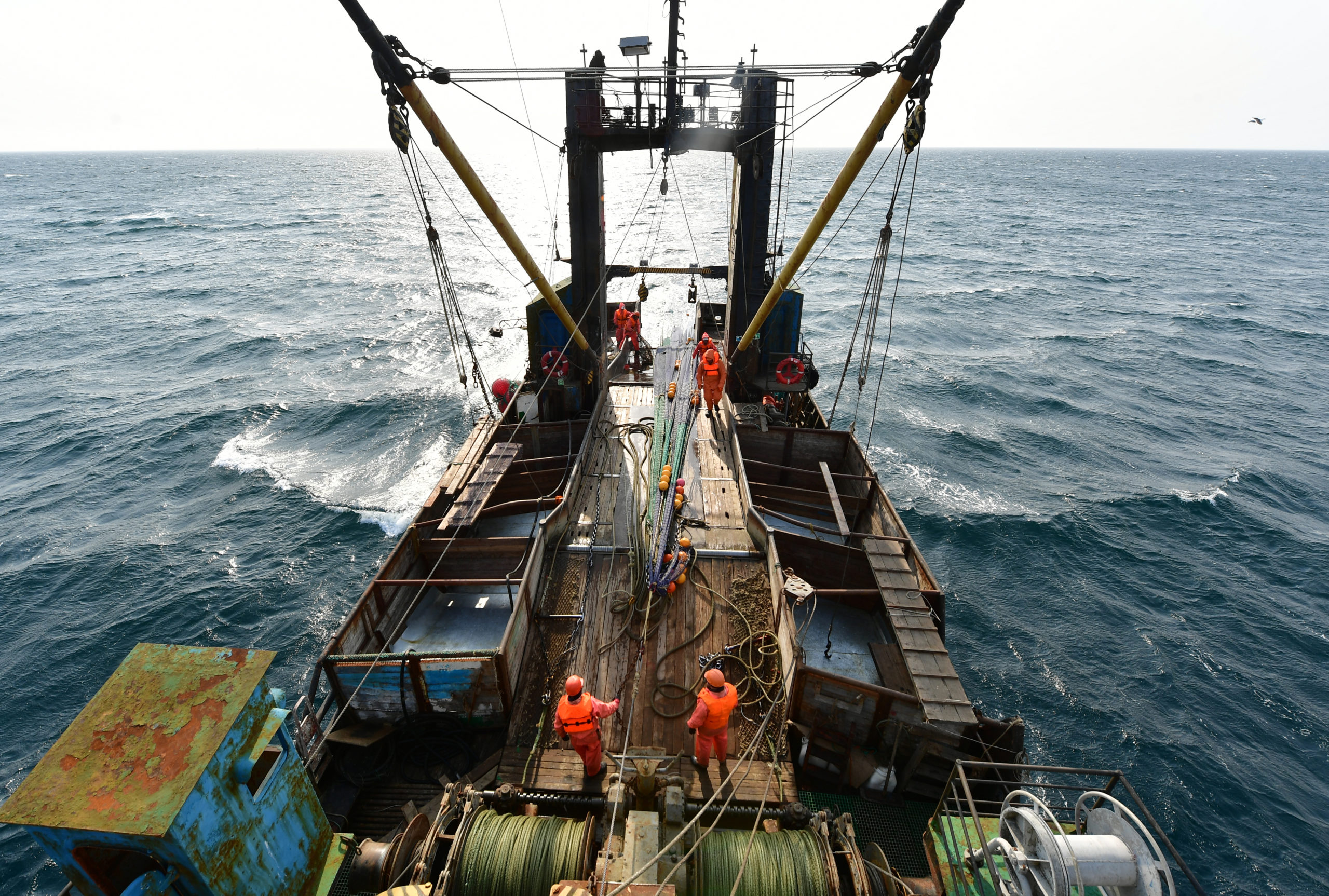A long-awaited Central Arctic Ocean commercial fishing ban takes effect
The treaty, more than a decade in the making, entered into force on Friday.

An international agreement temporarily prohibiting commercial fishing in the international waters of the Central Arctic Ocean took effect on Friday.
Ten signatories, including Arctic and non-Arctic nations as well as the European Union, vowed not to fish commercially in the region until the ecosystem is better understood and sustainable regulations are in place.
The treaty will remain in force for 16 years, with options to extend it every five years.
Much of the Arctic Ocean is controlled by nations within their exclusive economic zones. But the Central Arctic Ocean Fisheries Agreement covers the international waters in the center of the ocean, a zone covering about 2.8 million square kilometers.
It also creates a scientific research and monitoring program to advance understanding of the Central Arctic ecosystem, and it requires Indigenous knowledge and participation in the governance process.
The agreement represents a series of firsts in Arctic science and diplomacy, said David Balton, a senior fellow with the Wilson Center’s Polar Institute who formerly served as the U.S. Ambassador for Oceans and Fisheries and chaired the international negotiations on the agreement.
It’s the first Arctic treaty to include non-Arctic nations, said Balton, and it is one of the first binding agreements — if not the very first — to enshrine Indigenous traditional knowledge and the participation rights of Indigenous communities.
It is also the first international agreement to protect a potentially vulnerable region before exploitation takes place — the first steps toward regulating an industry before it even begins.
The landmark treaty is “the first multilateral agreement of its kind to take a legally binding, precautionary approach to protect an area from commercial fishing before such fishing has begun,” a spokesperson for the U.S. State Department said in a statement.
“The basic idea is to prevent fisheries from getting started, at least until there’s enough science,” Balton told ArcticToday. “That is kind of unusual.”
Thus far, there has been no commercial fishing industry in the Central Arctic which has been largely covered by ice for millennia. But as the climate changes and sea ice recedes, the region is opening for more traffic and natural resource exploration.
“It’ll really pave the way for some thoughtful thinking and planning going into managing the Central Arctic Ocean, instead of a free-for-all,” Peter Baker, director of Northern Oceans Conservation at Pew Charitable Trusts, told ArcticToday.
“It puts the science first and it really sets a path where science can lead the way,” he said. And it gives nations a framework for collaborating in Arctic research and governance as new commercial opportunities emerge in the North.
In the Arctic, Baker said, having nations work toward scientific consensus “before massive exploitation and industrialization takes place, allows us as a world to make decisions that are best for the future instead of just short-term economic decisions.”
And, he said, such “forward-thinking” agreements could be replicated other areas, not just fisheries.
The agreement, which took a decade to negotiate, was signed in 2018 by Canada, China, Denmark (including Greenland and the Faroe Islands), the European Union, Iceland, Japan, Norway, Russia, South Korea and the United States. Russia was the first to ratify the agreement, and China was the last.
This agreement could pave the way to a treaty on sustainable fishing in the future, Balton said, but that could take several years.
“It may be quite a long time, both before we know enough about that part of the ocean to actually allow fisheries to start there, and it may be a long time as well before there are enough fish up there to support, at least, a large-scale commercial fishery,” he said.
In addition to the prohibition on commercial fishing, the agreement also creates a scientific research and monitoring program. Such research would shed light on the ecosystem of an entirely new fishery, and whether or how it might be harvested in the future.
The agreement only applies to commercial fishing, not subsistence harvests.
Mandating Indigenous knowledge and participation is a “big deal,” Balton said. He said it may have flown under the radar during negotiations, but ensuring strong voices from Indigenous communities is vital for creating sustainable practices and policies, he said.
“Even though the Indigenous people and others who live near the Arctic coastline do not engage in high seas fishing, the potential depletion of fish stocks in the high seas area by commercial fishing vessels would threaten marine resources closer to shore on which those communities depend,” Balton wrote in an op-ed on Friday.
The long negotiations spanned two Republican and two Democratic administrations in the U.S., beginning when President George W. Bush signed a law to begin the process in 2008.
Disagreements over actions in other parts of the world — for instance, Russia’s involvement in Syria in 2011 and its invasion of Crimea in 2014, and escalating tensions with China under the Trump administration — threatened to stall negotiations, Balton said. But the ratification of the treaty shows that nations can cooperate well in the Arctic, even among mounting geopolitical tension.
“It’s a reminder, you might say, that it is possible for the nations in the Arctic region to cooperate on things where they do have mutual interests — since there will be other things out there, too, and there have been other things in the past — despite tensions,” Balton said.